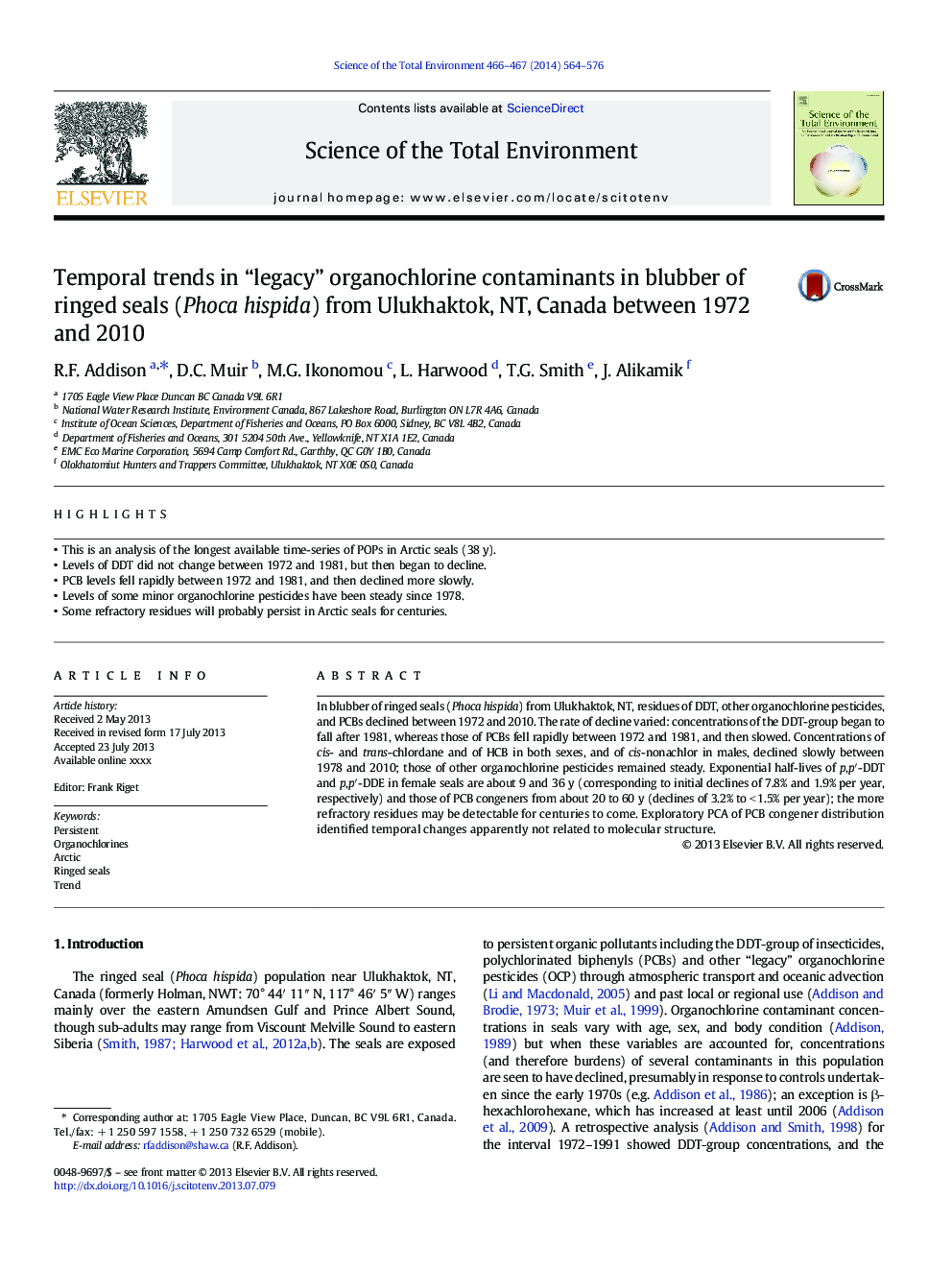| Article ID | Journal | Published Year | Pages | File Type |
|---|---|---|---|---|
| 6332310 | Science of The Total Environment | 2014 | 13 Pages |
Abstract
In blubber of ringed seals (Phoca hispida) from Ulukhaktok, NT, residues of DDT, other organochlorine pesticides, and PCBs declined between 1972 and 2010. The rate of decline varied: concentrations of the DDT-group began to fall after 1981, whereas those of PCBs fell rapidly between 1972 and 1981, and then slowed. Concentrations of cis- and trans-chlordane and of HCB in both sexes, and of cis-nonachlor in males, declined slowly between 1978 and 2010; those of other organochlorine pesticides remained steady. Exponential half-lives of p,pâ²-DDT and p,pâ²-DDE in female seals are about 9 and 36Â y (corresponding to initial declines of 7.8% and 1.9% per year, respectively) and those of PCB congeners from about 20 to 60Â y (declines of 3.2% to <Â 1.5% per year); the more refractory residues may be detectable for centuries to come. Exploratory PCA of PCB congener distribution identified temporal changes apparently not related to molecular structure.
Related Topics
Life Sciences
Environmental Science
Environmental Chemistry
Authors
R.F. Addison, D.C. Muir, M.G. Ikonomou, L. Harwood, T.G. Smith, J. Alikamik,
